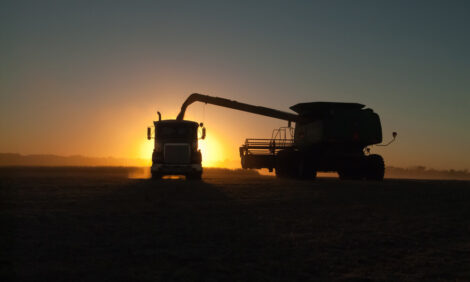



CME: Meat Inspection Furloughs Averted
US - It appears the meat inspection furloughs that have been threatened/promised by Secretary of Agriculture Tom Vilsack may have been averted, write Steve Meyer and Len SteinerThe U.S. Senate passed on a voice vote yesterday a measure to shift $55 million in funds within the Department of Agriculture’s budget to keep from idling inspectors and packing/ processing plants between now and the end of the federal government’s fiscal year on September 30. The spending bill itself was approved 73- 26 by the Senate and will now go to the House. It is not a done deal yet but most observers expect the House to pass the spending measure quickly.
It has been a heated but sad race this spring between cattle and hog markets to see which one could be more disappointing. Cattle and beef cutout values have shown some signs of life the past three weeks. We addressed the cutout value situation in Tuesday’s edition. 5-market average fed cattle have jumped into the high $120s the past three weeks as well. That is $4-$6 lower than we had originally expected but the past two weeks’ average prices being above year-ago levels is somewhat encouraging — especially with the normal seasonal peak in cattle prices still ahead of us in April.
Pork and hogs, though, have been a pretty bitter pill to swallow, especially for hog producers who are coming off some near-record losses on hogs sold last fall. But is this a case of unrealistic expectations as well? We don’t think so, primarily because we expected stronger beef prices to lead pork upward. Daily Livestock Report readers have read about all of the other factors that have hurt demand — as well as the surprising staying power of total protein supplies this spring.
The top chart at right shows weekly data for USDA estimated pork cutout value since 2008 as well as the average for 2008 through 2012. It is obvious that pork cutout values have been softer than normal so far in 2013. But the interesting feature of the chart is that pork cutout values are NEVER ROBUST during this time of year. Only 2011 saw cutout values rise significantly during the first quarter and the 5- years average increases by only about $4/cwt from January through March. It is clear that, historically, April has been the time of value gains for pork product and that conclusion would be even more solid if the 2009 pork market had not encountered H1N1 influenza (or “swine flu”) in April — an unfortunate occurrence that completely negated that year’s seasonal strength. The normal April-May increase is about $8/ cwt. Adding that this year will only put the market back in the upper $80s. That level would still far short of costs in the upper $90s but producers will take any improvement they can get at this point.
Pinpointing a culprit in the soft cutout value situation is not easy. Hams have been very disappointing since February 1 with the primal composite value falling by $12/cwt. But they are not alone. The composite primal value (a value for the cut basically in the form that it first comes off the carcass) for butts has fallen by $9, picnics have dropped about $10 and bellies have fallen by $17. In addition, 72% lean pork trimmings and boneless picnic meat prices have lost $13-$14/ cwt over that time period. Only loins have held their value relative to the beginning of the year and most would argue that their price was awful to start with. The loin primal last week was down $12 from one year ago. None of this paints a pretty picture.
USDA Estimated Pork Cutout Value, Weekly

Pork Packers' EST'D Gross Margin

Which brings us to pork packer margins. As can be seen above, our estimate of gross pork packer margins has improved sharply the past three weeks. But these gains are not like the gains in beef packer margins we addressed earlier this week. Those were driven by improvements in cutout value which means there is “space” for higher cattle prices. The improvements in pork packer margins have been accomplished by pushing down hog prices. Producers may not like that but it is a necessary step to get out of this funk. There must be margin at the packer level to keep hogs moving at the proper rate. The challenge now is to get cutout values higher — creating that same space to accommodate higher hog values. It’s a good thing spring is here!








